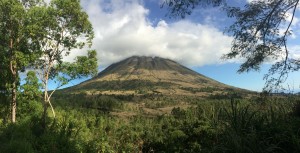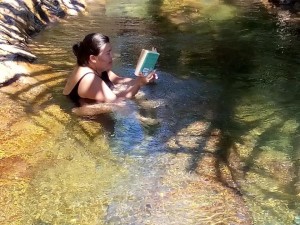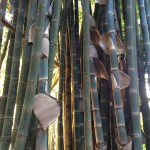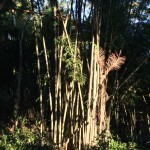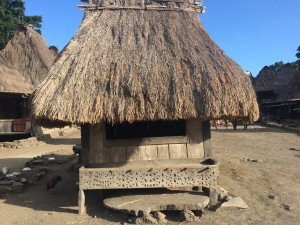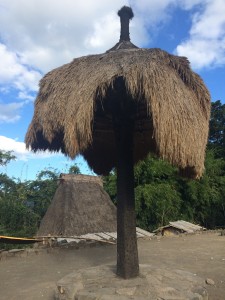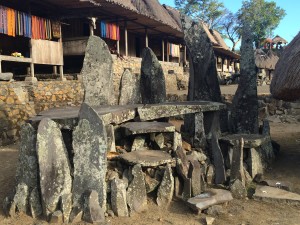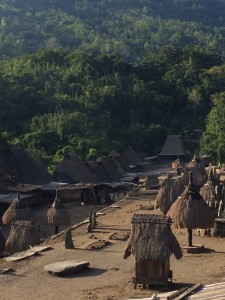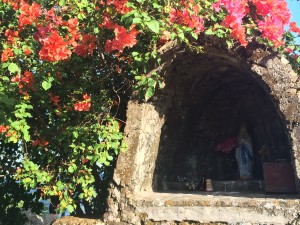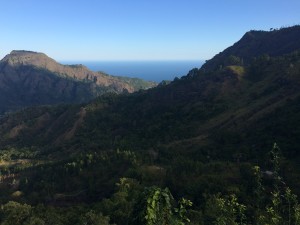Flores is my Indonesia swan song – my last major trip in the archipelago nation before heading back to the U.S. I’m just barely staying true to Weekend Crossroad’s philosophy, as between its immense size and still developing infrastructure, Flores requires considerably more a long weekend to explore properly. However, those with time constraints can always choose a couple of highlights to enjoy, as illustrated in the following multi-part Flores series. Alternatively, one can choose to take an 8-10 day overland trip from Maumere to Labuan Bajo, which covers roughly two-thirds of the island.
This is Part five of eight. Check out Part one, Flores 101: How, When and Why to Go, Part two, Flores: Singing and Swaying in Sikka, Part three, Flores: Enjoying the Multicolored Regency of Ende, and Part four: Flores: Relaxing in Riung.
Bajawa is by far the most chill place in Flores — both literally and figuratively. With temperatures dropping to as low as 12 degrees centigrade in the chilliest months of July and August, visitors will definitely need a sweater and/or light jacket. And as in Northern Sumatra, there are many Indo-Rastafarian “mountain guides” happy to lead treks or just hang out. Travelers who are athletically inclined will find no shortage of beautiful volcanoes to scale, while at the other end of the spectrum, those in search of local gastronomic delights will not be disappointed (for a change!) An excellent midpoint for your over-island adventure, Bajawa is a great place to just relax.
Heading to Bajawa from Riung, we bump along the same terrible road for several kilometers before reconnecting with the paved highway. Our first stop is Mangeruda Hot Springs, a facility which itself has seen better days, but on the plus side is delightfully empty on weekdays.
Avoid the man-made pools which are of dubious hygienic standards, and head straight for the natural falls. While short in stature, they still pack quite a punch and are used by locals for a natural massage. A quick “pit stop” should be more than sufficient unless you want an extended soak. (I quite enjoyed reading in Soa Poba Polo, the point where the hot spring meets the river, serving as a natural thermostat of sorts.)
Arriving in Bajawa, capital of Ngada Regency, we enjoy a quick lunch at Camellia Restaurant and drop off our bags at the hotel. We then head for Bena Village, located short ride away through gorgeous mountain passes and a beautiful bamboo forest.
- This fast growing bamboo is a sustainable resource for the local community.
Bena Village is one of the best-preserved examples of Ngada culture. Home to megalithic stone formations, ancestral shrines, and a small grotto dedicated the Virgin Mary, Bena at once conjures up a deep sense of history, tradition, and connection to the spiritual world. There is also a vibrant sense of life, with children playing football clad in dusty jerseys of their favorite players, and women chatting, chewing betel nut, and weaving traditional ikat sarongs and blankets.
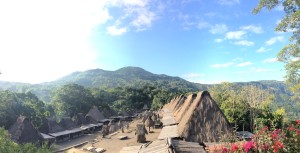
The raised, thatched roof Ngada village houses are set up in two parallel lines, in the center of which can be found ancestral shrines – the ngadhu, representing male ancestors, and the bhaga, which serves as the female ancestral clan shrine.
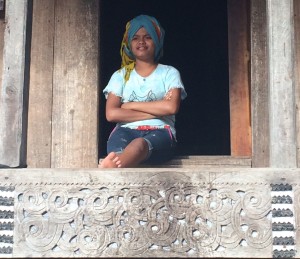 Unlike most social groups in Indonesia, the Ngada are matrilineal, meaning that children are considered to be members of their mother’s clan – and houses are bequeathed accordingly. Ancient Ngada society was organized according to strict hierarchical classes – nobility, warriors and slaves.
Unlike most social groups in Indonesia, the Ngada are matrilineal, meaning that children are considered to be members of their mother’s clan – and houses are bequeathed accordingly. Ancient Ngada society was organized according to strict hierarchical classes – nobility, warriors and slaves.
- The bhaga, which symbolizes the sanctity of the home and the female figure, resembles the traditional Ngada house on a smaller scale. Other auspicious objects are buried beneath the shrines to bring blessings and good fortune.
- The phallic shaped ngadhu, which symbolizes fertility and valor, is not carved from dark wood. The hue comes from the blood of sacrificial animals, ranging from chickens to pigs and even buffaloes.
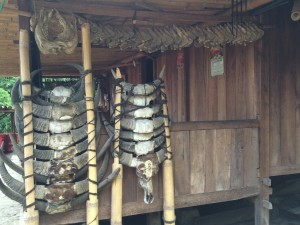
Nothing goes to waste . . . water buffalo horns, skulls, and pig jaws from ritual sacrifices are used to decorate homes.
During my visit, a flurry of building activity was going on, with workers seeking to replicate traditional processes as much as possible. (I later find out that while the site has been placed on the UNESCO World Heritage Tentative List, the villagers are striving for permanent recognition, and the organization is providing financial assistance to support this goal.)
But what really strikes me is the megalithic structures at the center of the village, which I am told continue to serve as means to connect with the supernatural realm and ancestral worship through ritual ceremonies and animal sacrifice. No one is able to tell me exactly how old they are — but the village itself dates back over 1000 years.
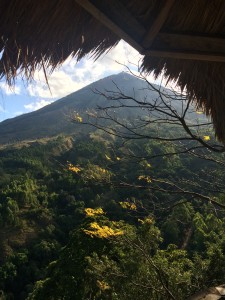 The final stop is a small hill which offers a beautiful panoramic vista of Bena Village, Mount Inerie, and the volcanic valleys leading to the Savu Sea. It is crowded with local visitor, but I still found unobstructed vantage points from which to snap photos.
The final stop is a small hill which offers a beautiful panoramic vista of Bena Village, Mount Inerie, and the volcanic valleys leading to the Savu Sea. It is crowded with local visitor, but I still found unobstructed vantage points from which to snap photos.
- Bird’s eye view of the village.
- Virgin Mary grotto.
- The surrounding volanic landscape.
Apart from Bena Village and hikes of varying difficulty, there is not much to “do” in Bajawa. Surprisingly this is what made it one of the more enjoyable stops for me. Taking advantage of the cooler temperatures, I took extended walks around the town and deep breaths of the crisp mountain air. I also enjoyed some of the best food I had in Flores at Lucas Cafe, where I indulged in pork sate and tempe(h) with tomato — a different style of preparation from what I typically had in Java. I had no idea what was coming up next — but had I been aware, I would have appreciated this down time all the more!







